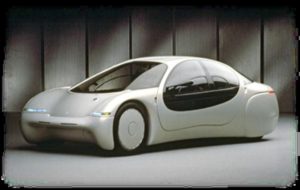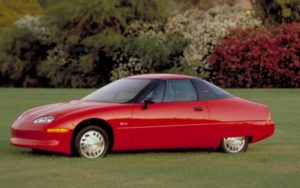“I realized that energy was at the root of many security, development, and environment problems,” Amory Lovins
Doomsday prophet, socio-economic genius or automotive planner? — Neither. — A modern day automotive pioneer: a thinker, not a tinkerer.
In 1976, Lovins, a young man in his 20s, presented an essay to Foreign Affairs, titled “Energy Strategy: The Road Not Taken” The article focused national attention on him. He argued during the oil crises of the early 1970s for a “soft energy path” of improving fuel efficiency by making cars lighter and developing alternative fuels.
Naturally, the steel industry did not agree with his point of view, and petroleum people paid attention to finding more oil – what Lovins calls the “hard energy path.”
Lovins had studied physics at Harvard and Oxford universities, but his interest in energy usage and policy, combined with his practical wisdom, compelled him to write about energy matters. In 1982 he founded the Rocky Mountain Institute (RMI), an ‘Energy Think Tank’, and he developed the idea of HyperCars. ®
One of his books, ‘Winning the Oil Endgame’, details how we can become independent from oil, how we leave the petroleum age behind us within a few decades: first, double the fuel efficiency of motor vehicles, mainly through ultra-light vehicles with advanced materials such as carbon fiber to improve both safety and performance. “We no longer have to choose between making cars light and safe,” he said, “The next phase is to replace gasoline with alternative fuels such as ethanol and hydrogen.”
While other environmentalists still argue about political approaches, Lovins has produced facts and figures and encouraged decision makers in Detroit, Tokyo, Turin, Stuttgart, and Wolfsburg, and politicians in Ottawa, Washington, and other capitals, to consider his assumptions and calculations.
They have listened to what Amory Lovins had to say.
It should come as no surprise then that General Motors’ 1992 ‘Ultralight’ experimental vehicle looks very much like the above phantom drawing from Amory Lovins’ Rocky Mountain Institute — an early so-called HYPER–car?
Lovins explains that the transition to a post–petroleum future will generate jobs, create new industries, reduce greenhouse gasses and improve national security. He estimates that for the United States it will require an investment of $180 billion over ten years, and the result will bring savings of $70 billion per year by 2025. “The United States can get completely off oil and revitalize its economy led by business for profit,” predicts Lovins.
The auto industry has started to build and test cars after Lovins motto and model. Companies are investing billions of Dollars, Yen and Euros into new types of drive systems and the alternative fuels to power them. Vehicles with hybrid-electric engines, clean diesel engines using biofuels and hydrogen are being tested on roads around the world. Governments promote, coordinate, regulate and fund research and development in industry and institutions.
General Motors’ EV1 also had the early traits of a Hypercar, but its history is another story.
Can one individual influence the whole world? — Amory Lovins did. What kind of a person is he? — He is a deep thinker, a long way ahead of our time.
Could Henry Ford, Soichiro Honda or Ferdinand Porsche have done that? Their companies are now following Lovins model to a new age in transportation.
Next: Logical Progress in Hydrogen & Fuel Cell History
Tags: Amory Lovins, Hypercar, Rocky Mountain Institute
Comments are closed here.


